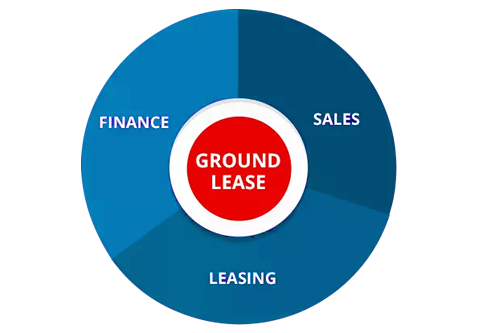Ground Lease Analysis
A ground lease involves leasing land, typically for 50 to 99 years, to a tenant who constructs a building on the property. The ground lease defines who owns the land and who owns the building and improvements on the property. Valuing the Leased-Fee Interest under a Ground Lease. When a property is leased employing a ground lease, two separate interests are created: the first is the Leasehold interest, held by the tenant; the second is the Leased-Fee interest, held by the landowner/lessor.

One way to generate revenue from real estate you own is by leasing the property. This is possible even if the property is bare land, without any improvements. In this instance, the property owner typically enters into a ground lease with a tenant.
Identification
A land lease or ground lease is a long-term lease of land, typically 50 to 99 years in length. The tenant normally makes improvements to the property, such as building a restaurant, supermarket or other structures. The terms of the lease dictate what happens to the improvements at the end of the lease term, which might give the landowner rights to the buildings, allow the tenant to remove the improvements or give the landowner the option to purchase the improvements.
Considerations
In a ground lease, the tenant is typically required to pay expenses on the property, such as taxes, insurance, maintenance and repairs, during the term of the lease, referred to as a net lease. The actual conditions of the lease can vary, depending on the agreement between the property owner and lessee.
Benefits
A property owner has the benefit of retaining ownership of the land while earning revenue on the property, without the expense of developing the land. Since it is typically a long-term lease, the property owner has a tenant locked into a commitment for a long period. At the end of the lease, the property owner may reap the benefits of whatever improvements the tenant made to the land.
Function
Ground leases are often commercial leases, giving lessees a way to build a business without the expense of purchasing land. Governments sometimes enter into ground leases when constructing public buildings. This allows them to construct buildings, such as libraries, when public land is not available and purchasing real estate is unaffordable.
Uses
An entity that owns land, yet is not in the position to sell the property, often uses ground leases as a way to generate income from this property. This might be public land, or tribal lands. For example, the Federal Bureau of Land Management often enters into ground leases with concessionaires to develop resort areas.
